Winter oilseed rape offers many benefits to tillage farmers, in terms of rotation, workload, and risk management. While many break crops can struggle to compare economically to cereals, some growers are achieving yields of 5t/ha and occasionally more.
At this yield level, the gross margin for winter oilseed rape, according to the 2020 Teagasc Costs and Returns, is approximately €543/ha, which compares quite favourably with 10t/ha of winter wheat (€434), 10t/ha of winter barley (€499/ha) or 9t/ha of winter oats (€430). This excludes the additional yield that is likely in a first cereal after the oilseed rape.
The key to good yields of winter oilseed rape is good weed control. Weeds obviously compete for light and nutrients, especially grass weeds and volunteer cereals, and they can also create admixture issues at harvest, especially where weeds such as thistles, poppies and brassicas are common. Therefore, good weed control is vital to take out as many of your problem weeds as possible.
Traditionally, growers used pre-emergence herbicides, as they were the most reliable and had the widest weed spectrum.
However, in some seasons, growers struggle to get crops sprayed at drilling time, as these pre-emergence herbicides need to be applied within 48 hours of planting. They can also cause damage if heavy rainfall occurs shortly after application.
Post-emergence products
In recent years, a number of post-emergence herbicides have been introduced, which can give useful control of many weeds.
They are useful to help relieve pressure during sowing, as many growers will be in the middle of grain harvest during this period. Table 1 shows the common pre-and post-emergence herbicides used in winter oilseed rape.
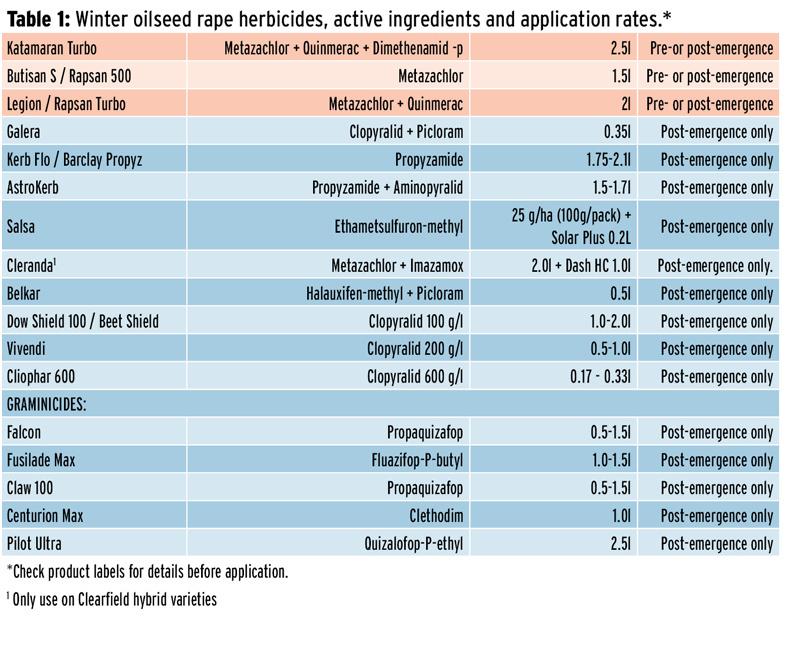
The introduction of Galera, Salsa, AstroKerb and Cleranda have also widened the spectrum of weeds controlled.
To achieve the widest spectrum of weed control, apply mixes or sequences of herbicides to target specific weeds.
Make sure to consult the labels before mixing products. Remember, Cleranda can only to be used on Clearfield varieties, which are hybrids bred specifically to be tolerant to this chemical. Other brassicas, including normal oilseed rape varieties, will be killed by Cleranda.
Grass weeds
Grass weeds in particular can be very competitive early in crop growth and graminicides can be useful in these situations when combined with broadleaved weed control, as provided by Katamaran Turbo, Butisan S, Rapsan Turbo etc.
Kerb Flo or AstroKerb are also good on grass weeds and some broadleaved weeds, but you must wait until November or December, when temperatures drop, to apply them.
In some situations, this timing may be too late, as volunteer cereals could smother plants before these herbicides are applied. In these situations, use a graminicide early to control the volunteer cereals and the follow-up with AstroKerb will top up the grass weed control, plus some broadleaved weeds.
Remember, if you use AstroKerb as part of your herbicide programme, the straw cannot be used for bedding or compost.
Specific targets
Products such as Belkar, Salsa, Galera, or the different Clopyralid products, are all very good on specific target weeds, eg Salsa for charlock control, and can be added into programmes to target specific weeds which are not controlled by the other herbicides. Table 2 shows the weed susceptibility to the different herbicides.
A programme approach, based on the strengths of individual products, combined with knowledge of the predominant weeds in a field, will deliver the best results.
Programmes need to be specially tailored for different fields, timings, weed burden, etc.
Do not rely on one single approach for all crops, otherwise you may be disappointed with the level of control achieved.
Note: Consult product labels for more details.



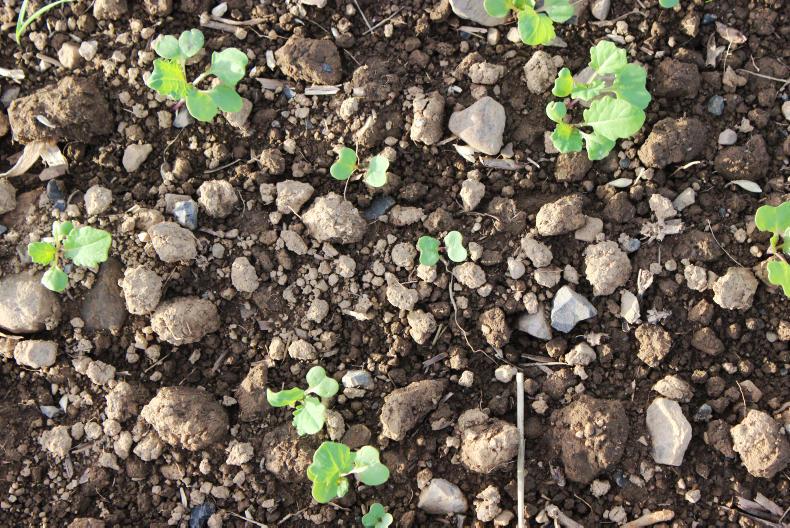

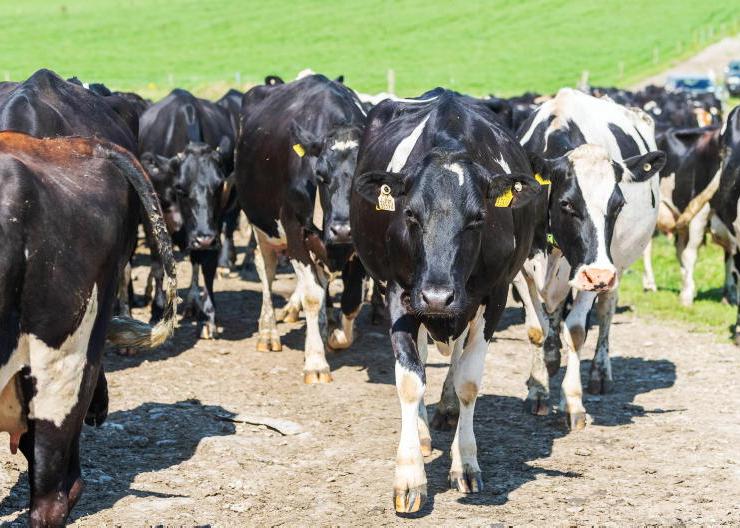

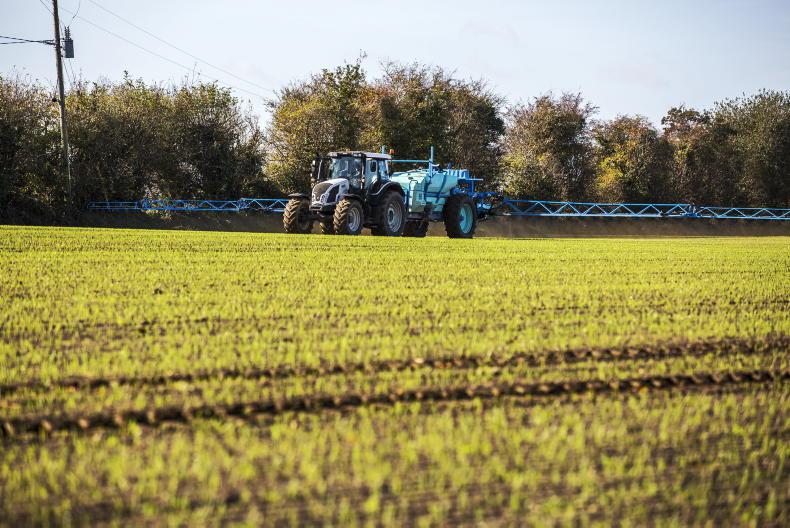
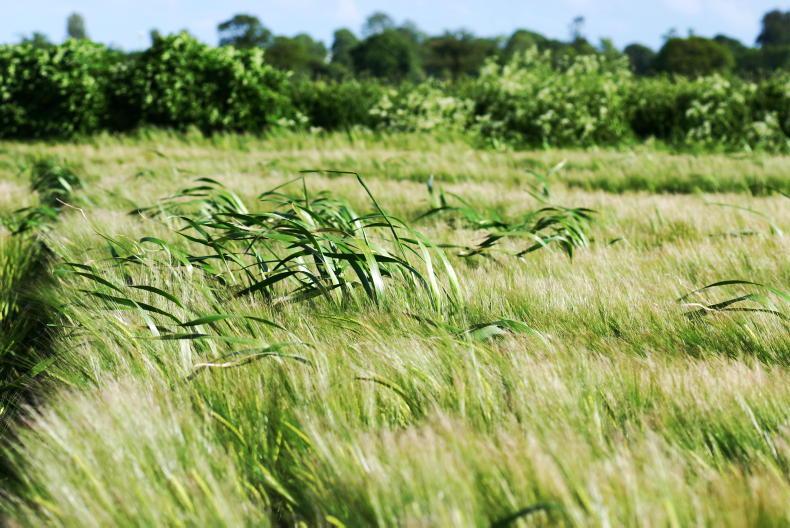
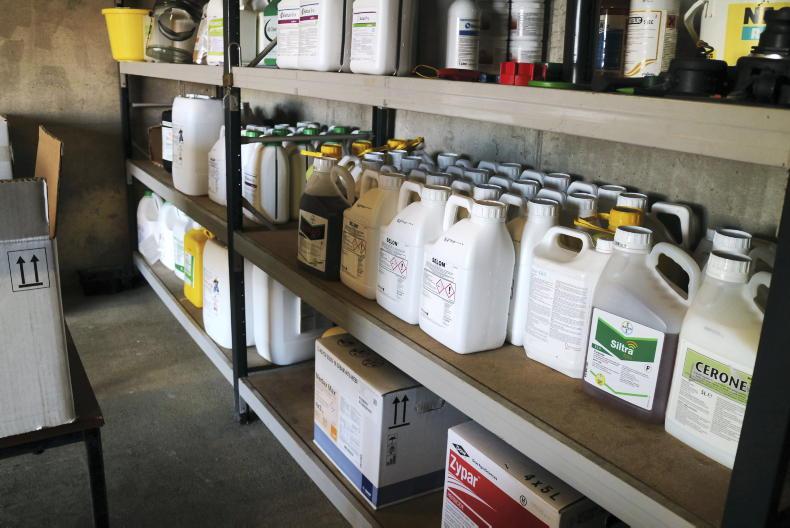
SHARING OPTIONS